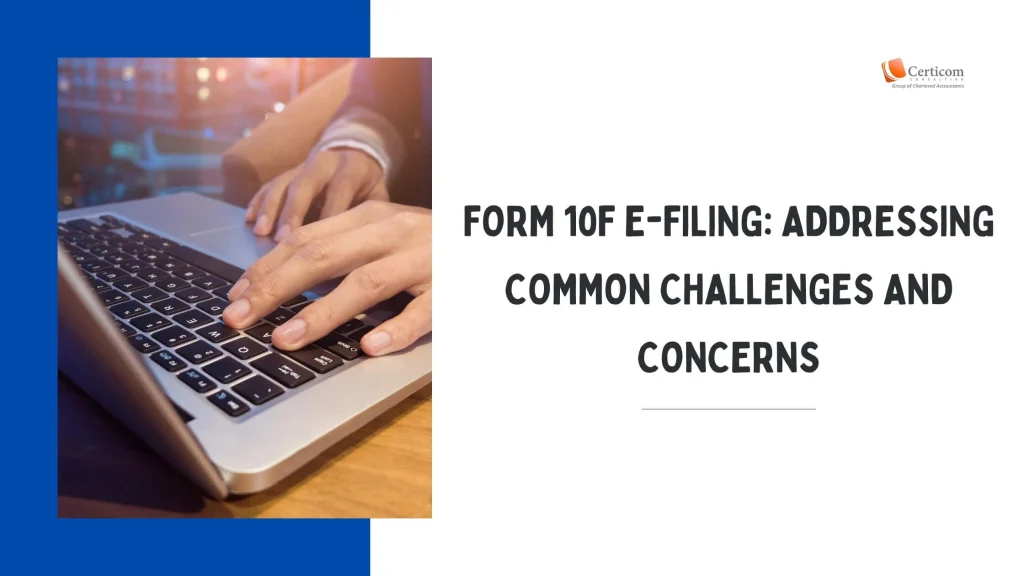Form 10F E-Filing: Addressing Common Challenges and Concerns

The Indian Income Tax Act mandates tax deduction on certain payments made to non-residents. To avail tax treaty benefits, non-residents must provide essential documents like a Tax Residency Certificate (TRC) and Form 10F. Previously, these documents were submitted physically to the Indian payer (the entity making the payment). However, in a bid to digitize the process, the Central Board of Direct Taxes (CBDT) recently introduced an electronic system for filing Form 10F. This transition, while aimed at improving efficiency, has posed significant challenges—particularly for non-residents without a Permanent Account Number (PAN).
To mitigate these difficulties, the CBDT initially allowed manual submissions until September 30, 2023. Subsequently, a “New Category” was introduced for non-residents without a PAN. Although this measure was intended to simplify compliance, it has raised concerns regarding clarity and potential risks for resident payers.

Key Challenges and Concerns
Ambiguity in the "New Category"
The CBDT has not explicitly defined the eligibility criteria for this new classification. The lack of clarity could lead to confusion, especially in cases where non-residents may still be subject to taxation in India. If tax authorities challenge these claims, the resident payer may be at risk of non-compliance.
Increased Compliance Burden for Resident Payers
With the introduction of the “New Category,” companies making payments to non-residents must determine whether a transaction qualifies under this category, whether a PAN is necessary, and whether additional documentation is required. This additional due diligence increases the administrative workload for resident payers.
Risk of Withholding Tax Disputes
Tax authorities may reject tax treaty benefits if they believe a non-resident should have obtained a PAN but has not done so. If such cases arise, the resident payer could be held responsible for under-deducting tax, potentially resulting in penalties and scrutiny.
Potential Benefits of the "New Category"
Despite these challenges, the move towards digital filing and the introduction of the “New Category” may have positive implications in the long run:
No Change in Core Provisions
The tax treaty benefit requirements remain unchanged. Non-residents must still provide their status, nationality, TIN (or an equivalent), a valid TRC, and their address. This means that while the filing mechanism has shifted, the fundamental tax provisions remain the same.
PAN Requirement Remains Unaltered
Section 195(1) of the Income Tax Act specifies that a PAN is not mandatory for non-residents to claim treaty benefits. The introduction of the “New Category” does not override this principle.
Limited Role of Resident Payers
Resident payers generally rely on the documentation provided by non-residents to determine tax withholding requirements. They are not expected to analyze complex international tax rules, such as General Anti-Avoidance Rules (GAAR) or Beneficial Ownership tests. Their role should be restricted to withholding the correct tax amount based on available information.
Legal Precedents Support PAN Exemption
Judicial rulings have previously upheld that non-residents are not always required to have a PAN, particularly in certain circumstances. These precedents should still apply, reinforcing the validity of the “New Category.”

Advancing Digital Transformation
Electronic filing enhances efficiency, allowing tax authorities to process non-resident taxpayer details faster and monitor compliance in real time. This reduces dependence on resident payers and authorized dealers for regulatory oversight.
Shifting Compliance Responsibility
The “New Category” appears to transfer the compliance responsibility from resident payers to non-resident taxpayers. This shift could ultimately ease the burden on Indian companies making payments to non-residents.
While the introduction of the “New Category” is a step toward streamlining tax compliance and digitalization, uncertainties remain regarding its implementation. The additional compliance obligations on resident payers and potential withholding tax issues raise concerns. If the CBDT provides clearer guidelines, this transition could be more effective and beneficial for all stakeholders. Until then, businesses and taxpayers must navigate this evolving regulatory landscape with caution.
Related Post
A Beginner’s Guide to E-Filing Income Tax Return for FY 2024-25
Faking Tax Deductions? You Could Be Penalised Up To 200% Under Income Tax Rules
Book A One To One Consultation Now For FREE
How can we help? *




